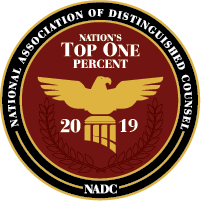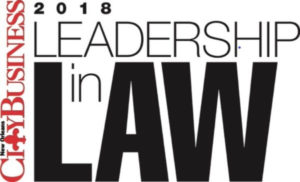
Consider two sets of statements
Set One:
• Is the height of the tallest redwood more or less than 1,200 feet?
• What is your best guess about the height of the tallest redwood?
Set Two:
• Is the height of the tallest redwood more or less than 180 feet?
• What is your best guess about the height of the tallest redwood?
Do you think your estimate would differ based on which set of statements you were given?
It likely would.
As you may have noticed, the questions are nearly identical, except for the replacement of “1,200” with “180” in the second set. This small change can have a profound effect on people’s estimates.
On average, individuals who only saw the first set of statements estimated that the tallest redwood was 844 feet. By contrast, individuals who only saw the second set of questions guessed on average that the tallest redwood tree was 282 feet. Those who saw the second set of statements estimated that the tallest redwood was three times taller than those who saw the first set of statements.
This is an example of anchoring.
Wikipedia defines anchoring as a cognitive bias that describes the human tendency, when making decisions, to rely too heavily on the first piece of information offered (the “anchor”). Anchoring is one of the most reliable and robust results of experimental psychology. It is especially powerful when you ask people to estimate the value of a complex or uncertain thing.
This basic fact about human cognition affects many aspects of the practice of law. Once you understand how it works, you can
see it on a daily basis.
How anchoring works
In “Thinking, Fast and Slow,” Daniel Kahneman, a Princeton professor and Nobel laureate in economics, described the two cognitive mechanisms responsible for anchoring effects.1 The first mechanism is referred to as a “priming effect,” and it happens subconsciously as part of our automatic mental processing. The second mechanism is referred to as “insufficient adjustment,” and it occurs as part of the process of our conscious deliberate reasoning.
Anchoring as a priming effect
Consider the following statement:
Elephants can eat between two hundred and six hundred pounds of foliage a day.
Please complete the following word fragment by filling in the missing blank: “so_p”
The fact that the initial question exposed you to the word “eat” makes you temporarily more likely to complete the word fragment “so_p” as “soup” rather than “soap.” The stimulus — in this case, your exposure to the word “eat” — is said to have primed your response to the task of completing the word “so_p.”
Studies have shown that this priming effect occurs regardless of the form the stimulus takes (visual, auditory, tactile, etc.) and regardless of an individual’s awareness that the stimulus is affecting his or her decision.
The following study provides another example. At a British University, individuals who used the office kitchen were asked to donate to the office tea and coffee supplies by putting money into an “honesty” box. In some weeks, a poster of a large pair of open eyes was near the box. In other weeks, the poster was an image of flowers. The study showed that users contributed about three times as much money to the honesty box in “eye” weeks than they did in “flower” weeks.
The picture of the eyes, the word “eat” in the elephant example, and the anchoring numbers in the redwood example all primed the responses of the individuals observed. This happens because exposure to one idea automatically activates a whole set of compatible ideas and experiences in our brains and, without realizing it, that set of ideas influences our actions.
Anchoring by insufficient adjustment
Consider the following question:
When did George Washington become president?
An individual who does not know the answer will likely pick a date as a point of reference (e.g., George Washington must have become president after 1776.). The date 1776 becomes the anchor, and the individual then adapts his or her estimate by mentally moving away from this anchor. (“How long was the revolutionary war?” or “Was he president during the French Revolution?”)
Each movement away from the anchor requires cognitive effort, and the individual stops adjusting as soon as he or she reaches a point of uncertainty about further adjustments. Because moving away from the anchor is cognitively demanding, the adjustment typically ends prematurely.
When individuals are uncertain, they err on the side of staying closer to the anchor. This is anchoring by insufficient adjustment.
Additionally, studies have shown that because the process of adjustment is mentally taxing, the adjustment becomes increasingly insufficient when individuals’ mental resources are depleted or when they are otherwise distracted.
This also explains why drivers are likely to drive too fast when coming off a highway onto city streets, especially if they are engaged in conversation.
How strong is the anchoring effect?
The anchoring effect is impressively large. In the redwood example, it was roughly 55 percent. That measurement is typical and numerous other experimental scenarios observed it.
In one study, judges were asked to read a description of a woman who had been caught shoplifting and then roll a die that was rigged so that every roll resulted in either a three or a nine.
Afterward, the judges were asked whether they would sentence the woman to more or less months in prison than the number they rolled. The judges were then asked to specify the exact prison sentence they would give to the shoplifter.
On average, those who rolled a nine said they would sentence her to eight months, while those who rolled a three said they would sentence her to five months. The anchoring effect, even for the judges, was 50 percent.
Anchoring effects were also found in decisions that people make about money. In one study, visitors at San Francisco’s Exploratorium were asked to contribute to an environmental cause. When visitors were exposed to an anchoring amount of $400, the visitors’ contributions averaged $143. When no anchor was mentioned, the visitors were willing to pay $64 on average.
Interestingly, when visitors were exposed to an anchor of $5, their average contribution went down to $20. In this example, the difference between the high anchor and low anchor groups was $123 or about 30 percent.
How anchoring applies to your law practice
Anchoring can have a large, and sometimes negative, impact on many areas of your practice, including making and responding to settlement offers, setting a client’s expectations, and negotiating in mediations. The effect of anchoring on jury awards has also been studied.
Countless studies found that anchoring strongly affects juries. As attorneys have suspected for years, an attorney’s damages request provides an influential starting point for jurors. Of course, most attorneys are also aware that if jurors view the requested damages as being outrageously large, the jurors may lose trust in the plaintiff and punish him or her with their verdict. This is sometimes referred to as the “credibility effect.”
Recent research confirms that there is indeed such a risk, but it suggests that the risk is small and is outweighed by the power of the anchoring effect.
In a study involving 776 research participants, each participant watched the same mock trial video of a personal injury case.2 The videos were identical except that in one version the plaintiff asked for an award of $250,000 for pain and suffering, and in the other version, the plaintiff asked for an award of $5 million for pain and suffering.
The mock jurors then rendered a verdict on liability and damages. The results showed that the anchoring effect was very strong. Jurors who saw the high anchoring request ended up awarding 430 percent more in damages than the jurors who saw the low anchoring request.
However, the study did find that asking for the larger amount had a small negative effect (-7 percent) on the plaintiff ’s chances of winning on liability. Considering this mathematically, asking for the larger amount still increases the expected value of a case by 350 percent.
It is important to note that this research does not give attorneys license to “shoot for the moon” in damages requests. As attorneys, we have an ethical duty to be truthful.
But, the research does suggest that when a large damages request is truly warranted by the facts of the case, the “credibility effect” may not be as powerful of a drawback as we once thought.
The anchoring effect does not just influence uneducated or uninformed people. It influences every human being. It is part of our biology. It is affecting you and your cases whether you are aware of it or not.
Understanding the basics of the psychological process that gives anchoring its powerful effect can help you recognize whether the anchoring effect will help or harm your case and then decide what to do about it.
Endnotes
1. Kahneman, Daniel. Thinking, Fast and Slow. New York: Farrar, Straus and Giroux, 2011.
2. Campbell, John E. and Chao, Bernard and Robertson, Christopher T., and Yokum, David V. “Countering the Plaintiff’s Anchor: Jury Simulations to Evaluate Damages Arguments” (January 28, 2015). 101 Iowa Law Review 543 (2016); U Denver Legal Studies Research Paper No. 14-36; Arizona Legal Studies Discussion Paper No. 14-25.
Available at SSRN: https://ssrn.com/abstract=2470066 or http://dx.doi.org/10.2139/ssrn.2470066.









